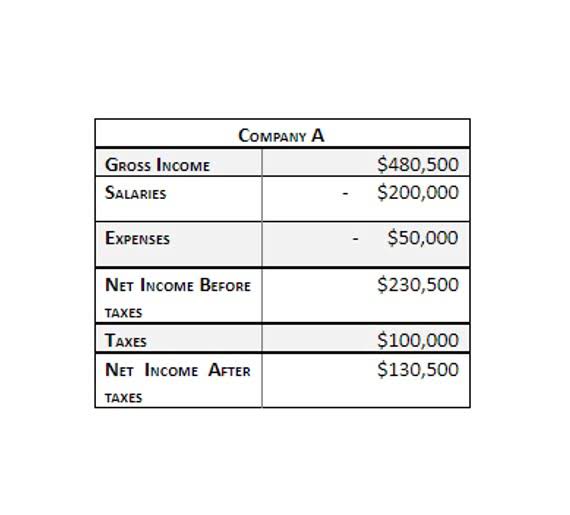Content
Additional paid-in capital is included in shareholder equity and can arise from issuing either preferred stock or common stock. The amount of additional paid-in capital is determined solely by the number of shares a company sells. Retained earnings are reported under the shareholder equity section of the balance sheet while the statement of retained earnings outlines the changes in RE during the period. As mentioned earlier, management knows that shareholders prefer receiving dividends. This is because it is confident that if such surplus income is reinvested in the business, it can create more value for the stockholders by generating higher returns. Likewise, the traders also are keen on receiving dividend payments as they look for short-term gains.
The steps below show how to calculate retained earnings in Google Sheets when the company has reported negative net income or net losses. Anyone looking to invest in your company or loan your company money will want to know why you have an accumulated deficit. If you’re a struggling startup, it might be understandable that you ran into trouble. It’s more alarming when an established company that’s had years to accumulate earnings shows a retained earnings deficit.
Balance Sheet Equity
Retained earnings are any profits that a company decides to keep, as opposed to distributing them among shareholders in the form of dividends. Dividends can be paid out as cash or stock, but either way, they’ll subtract from the company’s total retained earnings. Negative retained earnings can be an indicator that a business is looking weak and an early sign of potential bankruptcy. Certainly, it will point to a period, whether brief or sustained, in which earnings are relatively weak or cash flow is a problem.
Negative shareholders’ equity could be a warning sign that a company is in financial distress. It’s also possible that a company spent its retained earnings, as well as the funds from its stock issuance, by purchasing costly property, plant, and equipment. Therefore, a company’s retained earnings, revenue, and net income are all good indicators of its financial health. Just like with any financial metric, retained earnings should not be considered in isolation. For example, an acceptable range of values will depend not only on the industry and business model but also on the company’s current maturity or status.
The Purpose of Retained Earnings
They are less troubling for young companies with an impressive growth trajectory, a phenomenon common among some of the largest internet and tech companies. However, as time goes on, and you continue to grow and expand, negative retained earnings can be an indicator of your long-term health. Another way to recover from negative retained earnings is to increase revenue by finding new customers or selling more to existing customers. This can involve expanding into new markets, launching new products or services, or increasing marketing efforts to bring in more business.
The money that’s left after you’ve paid your shareholders is held onto (or “retained”) by the business. Negative shareholders’ equity is a warning sign that a business could be facing financial distress. Though companies with negative equity can eventually succeed and grow, investors should closely examine them before investing to understand how they wound up with negative equity, as well as their path forward.
Is negative retained earning a debt?
The admonition not to put all your eggs in one basket is especially appropriate for speculative investments. It takes a leap of faith to put your savings in an early-stage company that may not report what does negative retained earnings mean profits for years. The odds that a start-up will prove to be the next Google or Meta are much lower than the odds that it may be a mediocre performer at best and a complete bust at worst.
The retained earnings are calculated by adding net income to (or subtracting net losses from) the previous term’s retained earnings and then subtracting any net dividend(s) paid to the shareholders. Profits give a lot of room to the business owner(s) or the company management to use the surplus money earned. This profit is often paid out to shareholders, but it can also be reinvested back into the company for growth purposes. The most obvious reason for negative retained earnings is a lack of profitability. If a company is not generating enough profits to cover its expenses, it will eventually accumulate losses and end up with negative retained earnings. This can be caused by a variety of factors, such as increased competition, changing market conditions, or inefficient operations.
What do Retained Earnings tell You?
However, it is more difficult to interpret a company with high retained earnings. One way to assess how successful a company is in using retained money is to look at a key factor called retained earnings to market value. It is calculated over a period of time (usually a couple of years) and assesses the change https://accounting-services.net/accrued-expenses-recognize-expenses-incurred/ in stock price against the net earnings retained by the company. However, sustained negative retained earnings can indicate underlying financial issues, such as a lack of profitability or liquidity problems. Negative retained earnings can also limit a company’s ability to access credit or raise capital.



